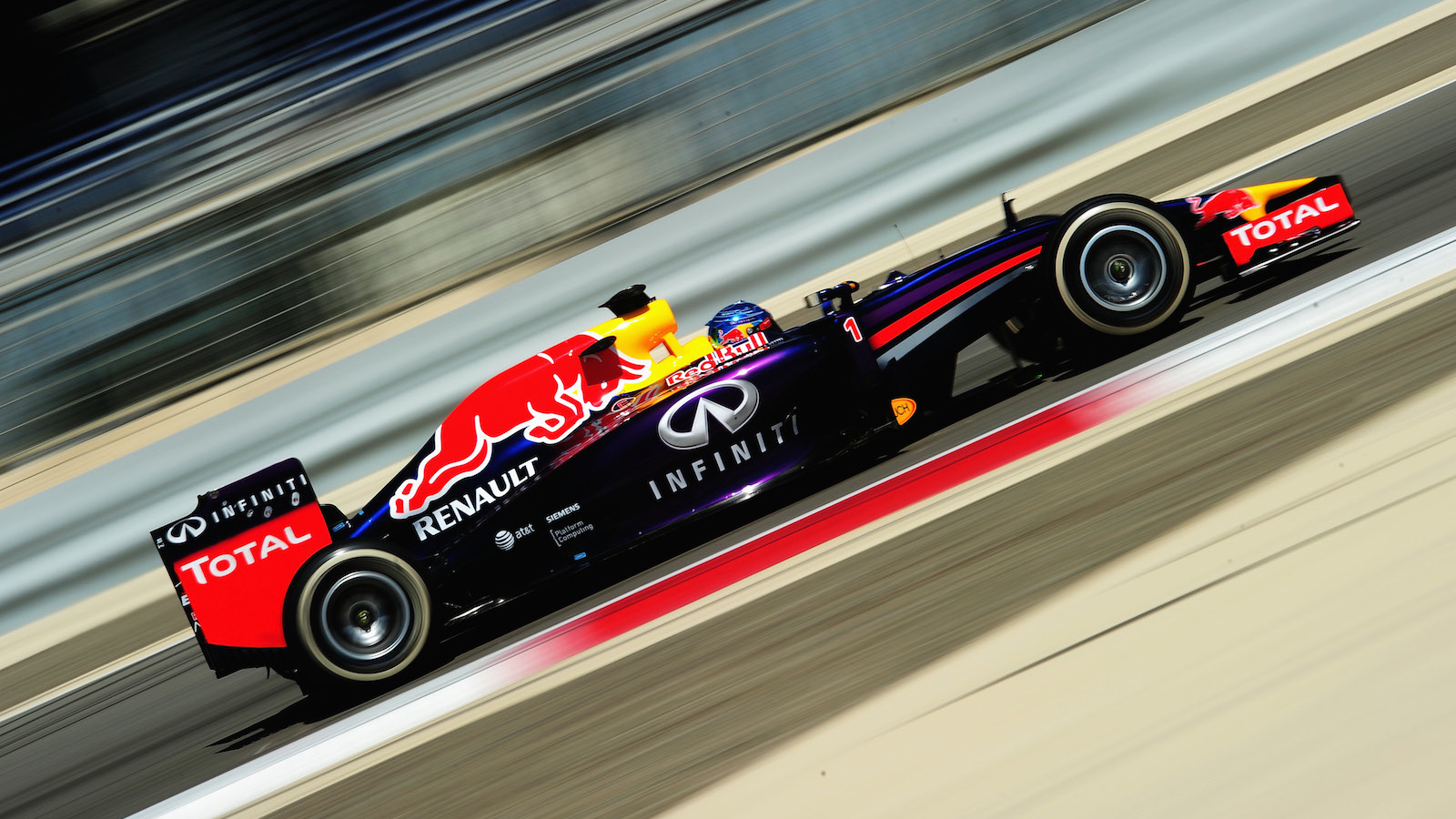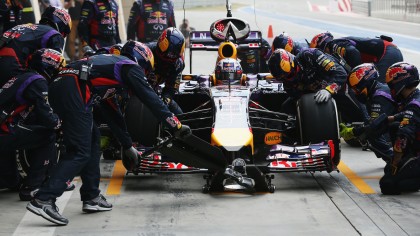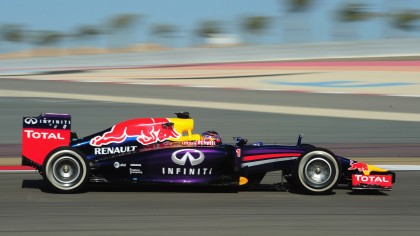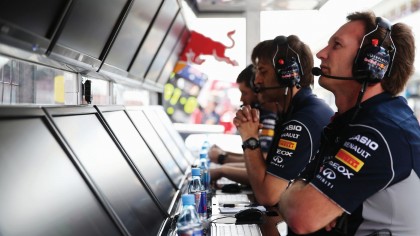The secret technology that makes the F1 world go round
Hundreds of gigabytes of car data needs somewhere to go

"The first races are going to be test events … no team is taking it lightly," says Alan Peasland, Head of Technical Partnerships at F1 world champions Infinity Red Bull Racing.
He squirms in his seat as he considers what promises to be some tentative opening races as the new Formula 1 season kicks-off in uncertain circumstances. "Reliability is crucial."
So is global data exchange and communication, both of which have been overhauled for the new season by Red Bull's new innovation partner, AT&T.
The new networks are in place in Australia to help the team battle new technical challenges created by a set of radical new regulations being introduced this season by the FIA, the sport's governing body. So what's going on?
Rule changes
This year will see fuel limited for the first time - 100kg for each car per race, while the 2.4-litre V8 engines have been replaced by 1.6-litre V6 turbo engines.
One consequence is the birth of a new hybrid tech called ERS, an energy recovery system that – like its kinetic forbear KERS – consists of an electric motor that charges-up from energy in a car's rear axle that would otherwise be wasted.
This energy is then fed back into the drivetrain to add more speed to the car, a technology that is being developed for road cars as well as racers.
Get daily insight, inspiration and deals in your inbox
Sign up for breaking news, reviews, opinion, top tech deals, and more.
And, while KERS gave a boost for just under seven seconds, ERS is more like 30 seconds. It could be a lap changer. Despite worries that F1 cars will be slower in 2014, recent testing in Bahrain suggested otherwise, with lap times in Bahrain only a second slower than in last year's actual race.

Moveable feast
"New car designs come as a result of Red Bull and other teams relying more on data, that data is managed and how its communicated internally and kept totally secure."
That gap is bound to come down largely because the cars that will race in Australia are nothing more than early prototypes – and not one will make it through to the second race without undergoing a lot of adjustments.
F1 teams never stand still. "Three years ago we were making 22,000 design changes to the car each season, involving about 7,000 new parts," says Peasland of the massive, constant task of keeping up with competitors.
It's an upwards trend, too; 32,000 design changes were made last season, and more are expected in 2014.
"If we didn't make design changes we'd end up at the back of the grid by the end of the season," says Peasland. The changes comes as a result of Red Bull and others relying more and more on data, on how they manage the data within the factory, how its communicated internally, and how it's kept totally secure.

Data explosion
"We're creating exponentially more data each year, and as you measure more data from the car it has to be stored somewhere and reused quickly," says Peasland. "We've got about 100 sensors on each car, each measuring more than one thing – from stress, strain, airflow, temperatures – and each sending data back to the factory in Milton Keynes.
"We're sending 100GB of data back to our factory so we need to be confident of the network's security," he says.
"AT&T arrive at the track before we do to set-up the point of presence, so for us it's a very simple plug and play."

New technology
"All of the cabling and infrastructure provided by AT&T is created almost from scratch at the track, and then torn down completely and removed after every single race."
The ante has been upped for the new season by AT&T, which has created a network 2.5 times bigger and faster than last season, while extending it to Red Bull's engine manufacturer Renault's Viry Operations Room in France, and also to Red Bull's remote wind tunnel in Bedford.
"It means we can reliably send more data at a faster speed to engineers in the UK, and it goes the other way too," says Peasland, who insists that FIA restrictions on wind tunnel use means that the team now has to get more from the bursts of data during the permitted sessions.
"We need to bet more for less, and AT&T helps us do that," he says.
Remarkably, the entire structured cabling and infrastructure provided by AT&T – in the last few miles at least – is created almost from scratch at each race track, then torn down and completely removed after the race.
It's a hectic weekend. "Friday is about optimising, and this is where we use real-time telemetry off the car, send it back to our factory in Milton Keynes so they can perform a lot of simulations to hopefully improve the performance of the car without it being on track," says Peasland. "We then relay that information to the engineers at the race track."

Track-side LAN
"With car reliability in question, in 2014 the collection and analyses of data is set to play a bigger role in F1 than ever"
The track-side LAN is managing the data, which comes off-car and into the racks in the garage and then to all other areas of the track – the pit wall, inside the garage and to Red Bull's technical office (nicknamed the treehouse).
AT&T transfer the same data both to Red Bull's factory and to Renault.
However, F1 is not just about collecting data on your own cars. "Saturday is when we start to analyse the competition," says Peasland, who shows us reams of scary-looking charts and graphs.
"On Sunday we manage the health of the car and look at data as it comes off the car, but it's mostly about strategy – and that's where the Operations Room back in the UK comes into it."
Red Bull looks in great depth at data about its competitors' lap times, when they've pitted, and how it's affected their race.
"It's a live document we monitor and it's these hundreds of charts that our race strategists work from."
To the layman it all looks baffling, but within it are one-second gaps that a driver can exploit to pit and return to the track in clean air - and thus gain a massive advantage over a rival.
That's how races are won – and Red Bull is famous for it. With reliability in question and uncertainty about how the new regulations are going to play out, the collecting and analysis of data is set to play a bigger role than ever before.
And the next step for AT&T? Put it all on iPads, obviously.
Now read: Why driverless technology will be the best thing that's ever happened to cars
Jamie is a freelance tech, travel and space journalist based in the UK. He’s been writing regularly for Techradar since it was launched in 2008 and also writes regularly for Forbes, The Telegraph, the South China Morning Post, Sky & Telescope and the Sky At Night magazine as well as other Future titles T3, Digital Camera World, All About Space and Space.com. He also edits two of his own websites, TravGear.com and WhenIsTheNextEclipse.com that reflect his obsession with travel gear and solar eclipse travel. He is the author of A Stargazing Program For Beginners (Springer, 2015),
